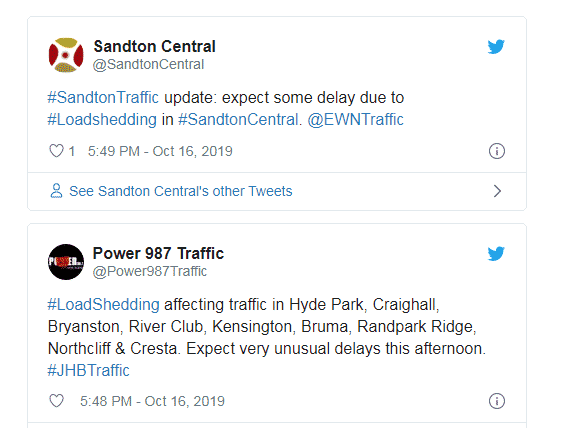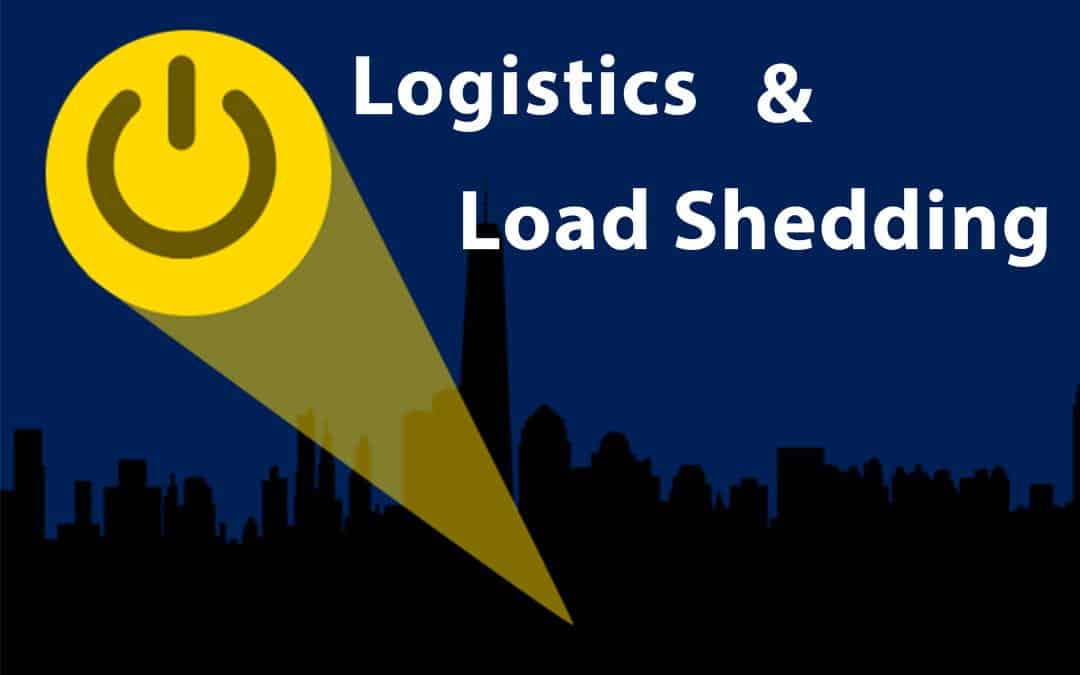In 2008, Eskom Holdings, South Africa’s largest electricity generator, transporter, and distributor —the entity produces up to 95% of South Africa’s electrical energy needs— introduced their controversial “load shedding” protocol.
Eskom states that “load shedding,” is the last resort electrical power protocol whose aim is to safeguard the country’s power systems during periods of low power generation capacity.
Everything You Need to Know About Load Shedding
In a PDF file freely available from the Eskom website, the entity notes that during periods of low or insufficient power generation (load), it becomes impossible to meet demand and to supply all consumers with the electrical power they need.
According to the public utility company, such instances can destabilize and unbalance the power grid and lead to a countrywide power blackout —and untold electrical damage. To ensure this does not happen, the entity uses a 4-stages, load-shedding plan:
- Stage 1: Requires the least amount of load-shedding (up to 1,000MW) and can be implemented three times over a four-day period for two hours at a time, or three times over an eight-day period for 4 hours at a time.
- Stage 2: Will double the frequency of Stage 1, which means you will be scheduled for load-shedding six times over a four-day period for two hours at a time, or six times over an eight-day period for four hours at a time.
- Stage 3: Will increase the frequency of Stage 2 by 50 percent, which means you will be scheduled for load-shedding nine times over a four-day period for two hours at a time, or nine times over an eight-day period for four hours at a time.
- Stage 4: Will double the frequency of Stage 2, which means you will be scheduled for load-shedding 12 times over a four-day period for two hours at a time, or 12 times over an eight-day period for four hours at a time.
On load shedding itself, Eskom states:
“During periods of low electrical power generation and supply (load), a planned load shedding or power rotation schedule rotates the available electrical power to Eskom’s user base by implementing planned power blackouts.
This ensures that some areas do not experience consistent blackouts while others experience no power blackouts.”
“…The controlled power rotation is a last resort system turned to only after exhausting all other options including running power stations at maximum capacity and asking high-power consumers to reduce their consumption during periods of low electrical power production.
By tightly controlling the planned rotation, load shedding ensures that no area experiences continued power outage for longer than two hours.”
Eskom also notes that they are constantly working to ensure constant power supply so that South Africans do not experience frequent power outages.
The government of Cyril Ramaphosa also recently announced a proposal to restructure the Public entity (Eskom) into three separate entities, generation, transmission, and distribution, a move aimed at helping the company evolve technologically so that it can remain competitive.
The government also announced plans to appoint a permanent Eskom CEO.
Despite all this, the president noted that the entity has “an untenable debt burden” and that “millions of individual users owe Eskom huge sums of money.”
This, unfortunately, means load shedding, and therefore power outages in different parts of the country will continue occurring in South Africa.
How Load Shedding Affects You
Load shedding affects you as a South African consumer and business owner in a number of ways. Some of the most common are:
Traffic snarl-ups
A post carried in the Business Insider SA notes how Eskom’s unexpected implementation of load shedding stage 2 brought traffic to a standstill in the streets of Cape Town and Johannesburg.

Arrive Alive also notes that the traffic snarl-ups are usually a result of non-operational traffic lights at intersections, thus making traffic flow very inefficient.
Traffic snarl-ups cost you and your business time and therefore money (Time = money).
Fuel issues
Most fuel stations and pumps rely on electricity.
Load shedding affects your ability to fill up at the pump especially if you work or operate in an area affected by a load-shedding schedule.
Eskom advises its consumers to ensure that their cars have enough fuel just in case planned power outages affect a petrol station’s ability to pump fuel.
ATM issues
Although most banks have a power back up system and other systems such as Uninterrupted Power Supplies (UPS) machines.
Power outages affect some cash disposing machines rendering them unusable. This can affect your ability to access the cash you need to operate your household or business.
Ross Linstrom, the spokesperson for Standard Bank points this effect out by noting, “With load shedding having been reinstated this week, it has impacted on our ability to dispense cash or perform transactions on some of our ATMs.”
Load shedding affects you in a number of other ways such as interrupting cell towers and therefore mobile communication.
It increases operational costs, and as Ramaphosa noted, “…load shedding contributes to investor unease at a time when we are trying to attract more domestic and foreign capital to South Africa and to improve our global rankings on ease of doing business…”
You now know what load shedding is, why Eskom has the protocol in place, as well as how it affects you as a South African citizen, a business owner, and the South African economy in general.
Now that you know this, you need to accept and understand that there is very little you can do about Eskom’s planned power outages.
With that noted, you can do plenty to prepare for load shedding and power outages beforehand.
How to Avoid Transport Delays during Load Shedding
Traffic snarl-ups and delays are common during load shedding.
These transport delays can affect you and your business in a number of ways such as compromising your ability to deliver goods and services to your core market.
To ensure load shedding does not lead to transport delays for you and for your business, you should:
- Stay Informed: To avoid transport delays during load shedding, stay informed about load shedding schedules, the daily status of the Power Generation and Supply system in SA, and any other delays in the electrical power supply. You can stay informed by following Eskom and subsidiary power generators and suppliers on social media, and by enrolling in their various notification services including SMS. You can also visit Eskom’s website to stay informed about planned load shedding schedules.
- Fuel Up: One way that load shedding affects you is that depending on the stage of load shedding implemented, you cannot fuel up at specific petrol stations. Once you know of a planned power outage, as Eskom advices, it pays to ensure that your car or transport vehicles have enough fuel. This ensures zero interruption in your transport schedule.
- Cash up: Since load shedding usually affects some banks’ ability to dispense cash via ATM, once you become aware of a planned power outage in your area of residence or operation, it would be incumbent upon you to ensure that you have enough cash for your personal as well as for your business needs.
Other ways to ensure load shedding does not affect you too significantly or cause transport delays for your business include accruing the services of a reliable logistics company such as Seacrest Logistics
Seacrest logistics operates a 24-hour logistics operation, uses various modes of transport, has vehicle tracking and daily status reports, and is strongly committed to handling and delivering your cargo with flexibility, reliability, and affordability.
Conclusion
Since there is not much you can do about load shedding and the schedule Eskom chooses to use, the only way to ensure it does not cause transport delays for you and your business is to prepare for it beforehand using the various strategies we have discussed in this post. If you implement these hacks, you will effectively avoid transport delays during load shedding.




